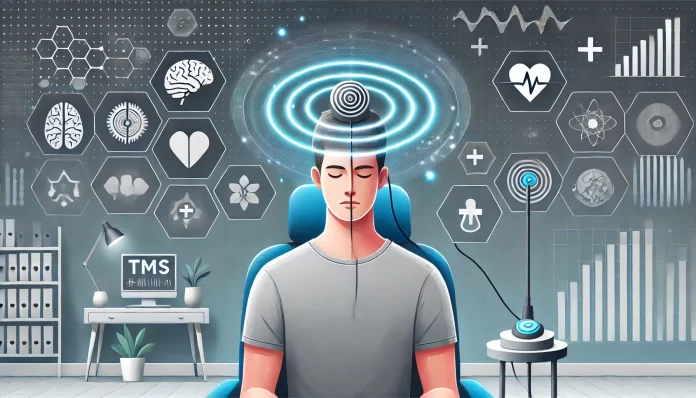Mental health care has made significant strides in recent years, with one of the most notable advancements being Transcranial Magnetic Stimulation (TMS) treatment APN. This non-invasive procedure has revolutionized the treatment of mental health conditions, offering new hope for individuals struggling with depression, anxiety, and other disorders. In this article, we will explore the benefits and applications of TMS treatment APN and its potential to transform mental health care.
What is TMS Treatment?
TMS treatment utilizes magnetic fields to stimulate brain activity, specifically targeting areas responsible for mood regulation, cognitive function, and other mental processes. This pain-free procedure involves placing a magnetic coil on the scalp, which emits gentle magnetic pulses that penetrate the brain. These pulses can either stimulate or inhibit brain activity, depending on the treatment’s frequency and intensity.
Benefits of TMS Treatment APN
- Effective in Treating Depression: TMS treatment has proven highly effective in treating depression, particularly for individuals who have not responded to medication or therapy.
- Non-Invasive: Unlike other forms of brain stimulation, TMS does not require surgery or the implantation of electrodes.
- Pain-Free: The procedure is pain-free, making it a suitable option for individuals sensitive to pain or who have anxiety related to medical procedures.
- Minimal Side Effects: TMS treatment has minimal side effects, which may include mild headaches or scalp discomfort.
- Improves Cognitive Function: TMS has been shown to enhance cognitive function, including memory and concentration.
Applications of TMS Treatment
- Depression: Commonly used to treat depression, especially in individuals who have not responded to medication or therapy.
- Anxiety: Effective in reducing symptoms of anxiety, including social anxiety and post-traumatic stress disorder (PTSD).
- Bipolar Disorder: Used to treat bipolar disorder, particularly for individuals experiencing depressive episodes.
- Obsessive-Compulsive Disorder (OCD): Shown to reduce symptoms of OCD.
How TMS Works: A Closer Look
| Step | Description |
|---|---|
| Preparation | Patient sits comfortably, and the coil is positioned on their scalp. |
| Stimulation | Magnetic pulses are delivered to target brain areas. |
| Duration | Each session typically lasts 20-40 minutes. |
| Frequency | Sessions are usually conducted five times a week for four to six weeks. |
Conclusion
TMS treatment represents a significant breakthrough in mental health care, offering new hope for individuals struggling with depression, anxiety, and other disorders. Its non-invasive, pain-free, and effective approach makes it an attractive option for those seeking alternative treatments. As research continues to uncover the benefits and applications of TMS treatment, it promises to be a transformative tool in the field of mental health care.
Key Takeaways
- Non-Invasive: No surgery or implantation required.
- Pain-Free: Minimal discomfort during the procedure.
- Effective: Particularly beneficial for treatment-resistant depression.
- Minimal Side Effects: Few and mild side effects.
- Multiple Applications: Useful in treating various mental health conditions.
Self-Help Strategies to Complement TMS Treatment
- Regular Exercise: Enhances overall mental well-being.
- Healthy Diet: Supports brain health and function.
- Mindfulness and Meditation: Helps manage stress and anxiety.
- Adequate Sleep: Essential for cognitive function and mood regulation.
- Support Groups: Provides community and understanding.
By integrating these self-help strategies with TMS treatment, individuals can optimize their mental health outcomes and lead more fulfilling lives.



